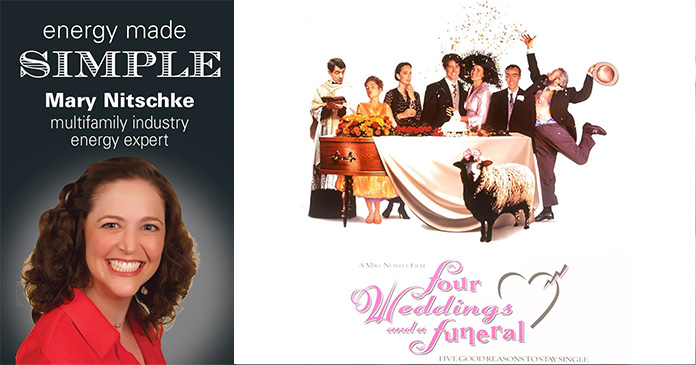Since the end of the recent recession, apartment owners have been gaining back some of the deep discounts they made to keep properties full. According to data collected by the Washington, D.C.-based National Multi Housing Council, average rents between 2009 and 2013 increased from $1.10 to $1.26 per sq. ft.—a 14.5 percent recoup for the average property portfolio. But for typical renters—working class families, recent college graduates, and young professionals—qualifying for a new apartment lease gets tougher as monthly rents increase.
With rents growing as wages remain flat and average renter credit scores still reflecting the recession, larger numbers of renters are being labeled “conditional approvals,” where leases are offered based on contingencies. These contingencies—additional security deposits of up to two months’ rent and/or a guarantor/co-signer—make it difficult for owners and managers to convert conditionally approved prospects.
Times aren’t just tough on renters. Apartment owners and managers are also pressured as it becomes more difficult to qualify and move-in residents who can pay rent in-full and on time every month. The result can often mean lower physical occupancy and less “economic” occupancy.
“There are always one or two leases where your entry points are just a little high for some individuals,” explains Alfredo Lopez, director of auxiliary services for The Lynd Company based out of San Antonio, Texas, which manages 30,000 apartment units across the Southeast United States. At many Lynd properties, the number of conditional approvals is on the increase—as high as 65 to 75 percent of the total prospect pool.
But big cash contingencies are increasingly recognized as a less effective and potentially unfair way to get more of those conditionally-approved residents moved in.
The problem, according to Lopez, is inflated security deposits don’t insure payment performance, and might be spreading thin finances even thinner. “Asking someone to come up with a whole bunch of money is only proving that they can come up with a whole bunch of money in a short period of time. Sometimes that quickly leads to other challenges.”
That’s where rent from payroll comes in. The Lynd Co. adopted the solution this year as a way to offer conditional approvals a lower cost option to move in, while providing greater certainty rent will be delivered in-full and on time every month.
More move-in’s, less flame-outs
Rent from payroll dispenses the outdated “all-in” mentality of requiring huge move-in deposits from conditionally-approved applicants. Instead, renters agree to have their employer deposit funds into a FDIC-secured, third-party-managed rent account every pay period. When rent is due, the property receives an automatic electronic disbursement to satisfy rent for every resident enrolled in the program, and residents get their timely rent delivery reported to a major credit bureau.
“The reason rent from payroll is so great at conversions is because we’re talking about a sizeable demographic of people with minor financial mistakes who still need a place to live and really want to rebuild their credit and improve their financial management,” says Kate Moriarty, director at Northland Investment Corporation.
After implementing rent from payroll at selected communities across the Northland portfolio of 22,000 apartment units in Texas, Florida and New England, conversion of conditionally-approved residents jumped from 68 percent to 82 percent, improving move-in volume by 21 percent among the conditionally-approved. At communities where conditional deposits were greater than $1,000, the rent from payroll effect was even more profound, propelling a weak 45 percent conversion to 74 percent.
These conversion improvements are near universal for companies adopting rent from payroll. Although rent from payroll can help lower costs and fees for renters at luxury communities, the solution works particularly well at B- and C-class communities, where 20 to 40 percent of the applicant pool are approved with conditions.
“As rents rise we tend to also see a rise in conditionally-approved applicants,” says Jason Whittington, vice president of business solutions at Gene B. Glick Company, which owns and manages 21,000 apartments units across the Midwest. At Glick properties where rent from payroll has been offered to conditional approvals, move-ins have increased from a conversion rate of 52 percent to 77 percent—overall a 48 percent improvement.
Eliminating payment friction, enhancing property value
The broad appeal of rent from payroll for property managers and renters includes the elimination of friction over rent payments. Since funds for rent are automatically set aside, renters never have to bother with the monthly exercise of scraping together rent. Likewise, property managers are alleviated from having to chase down late payers.
Moriarty says rent from payroll tends to chase away bad-character renters. “The worst chronic late-payers and lease skippers will avoid rent from payroll because it designates the money they’d rather spend elsewhere as rent before the funds ever become discretionary,” she says.
According to an analysis of 6,597 conditionally-approved applicants conducted by a Boston-based rent from payroll provider, skip and eviction rates drop from 9.37 percent to a mere 2.12 percent when rent from payroll is applied—a 77 percent decrease. Given an industry average of $2,000 to $4,000 in vacancy loss and to repair, repaint and make-ready a vacant unit, the cost of unexpected move-outs drops by as much as $250,000 for every 1,000 conditionally approved move-ins on a rent from payroll program.
Recent integration of rent from payroll into resident screening solutions has accelerated offer delivery even further. With more conditionally-approved residents converting faster, apartment owners and managers can reduce the time it takes to fill made-ready vacancies and subsequently see reduced days on market. According to the National Apartment Association 2014 Survey of Operating Income and Expenses, associated marketing spend to turn a unit was another $169 per apartment on top of make-ready costs.
Significantly better payment performance, decreased bad turns, and increased conversions and occupancy all improve net operating income—and the underlying value—of properties using rent from payroll solutions.
“Some of our growth has been in luxury communities, but the majority of the growth we’re expecting in the second half of 2015 is solid B and C class investments,” says Lopez, who will look to improve values by extending use of rent from payroll at new properties with high rates of conditional approvals. “In addition to the increased occupancy and length of stay, I think you are improving the overall resident demographic of your property.”
By lowering the cost for renters to move-in and improving their performance, as well as the long-term value of apartment real estate, rent from payroll is simple economics for apartment owners, property managers, and renters alike.
“To me, rent from payroll is one of the few things you can do that fulfills a mission purpose and a profitability purpose—we’re really providing a great tool to our residents to help them manage their finances and improve their credit, and we’re also improving our ultimate bottom line,” says Whittington.
Author: Dave Sherbal is a principal at Heschel Asset Management and across a 16-year career in multifamily has also served as the director of asset management for the Fifteen Group and the vice president of asset management for the JPI Companies.
















